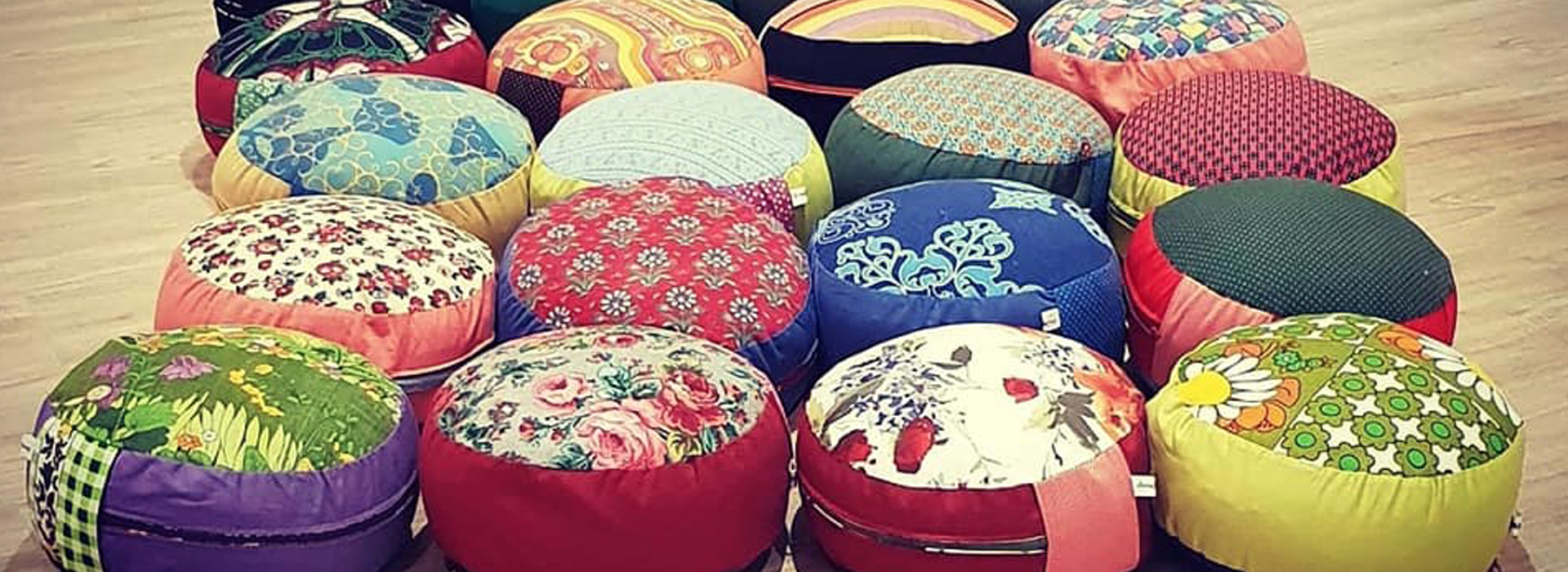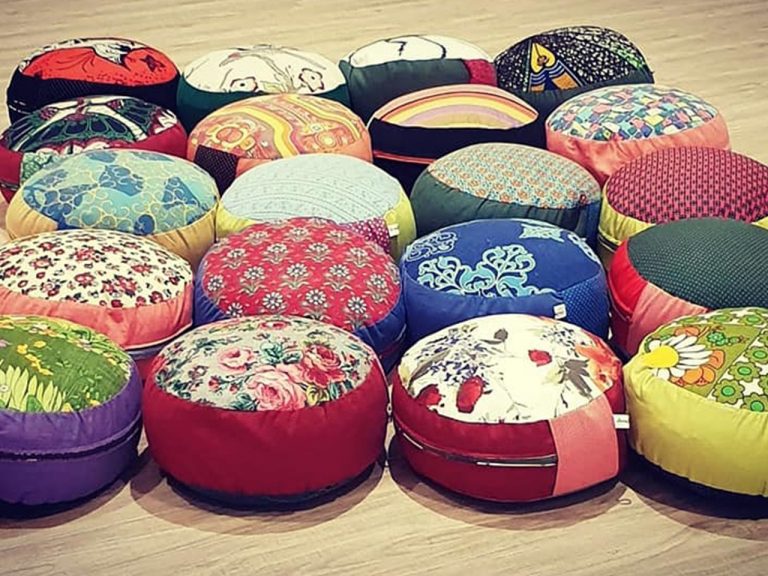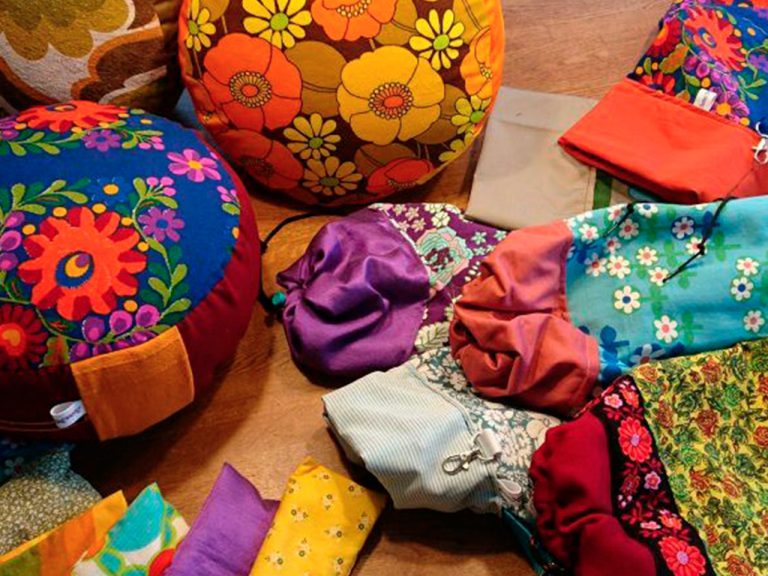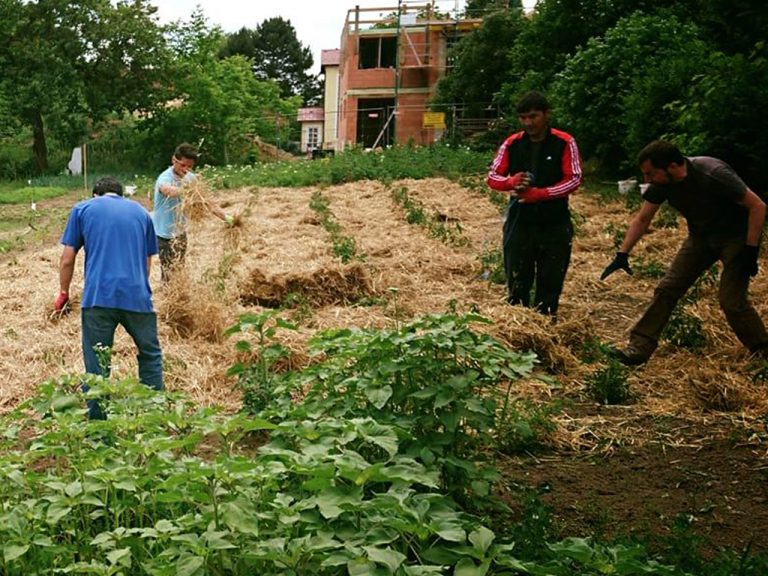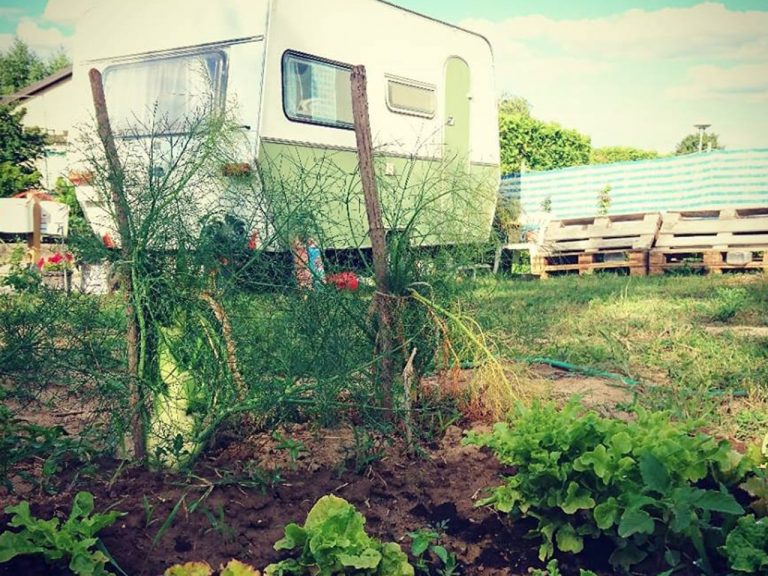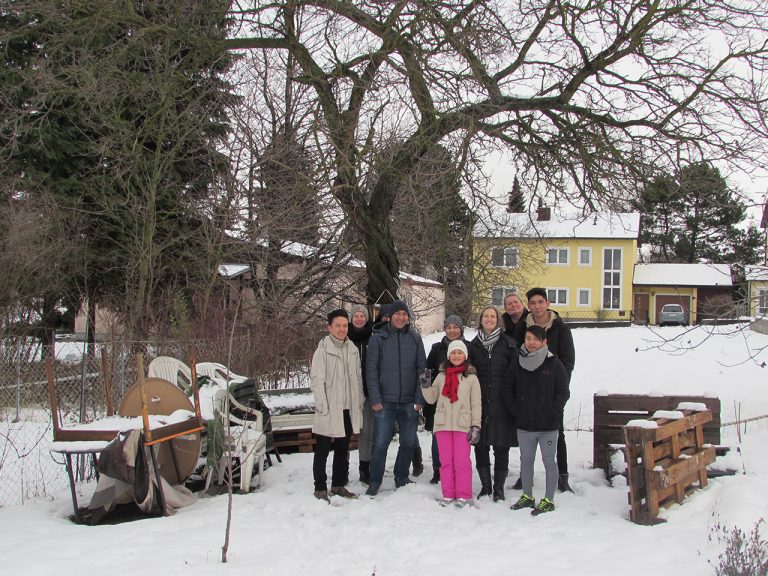Regular work days to improve sewing skills and generate money to cover the garden association’s cost through collective marketing of the produced items.
Description of the activity
Once per week, the two organisers invite people to come to their private homes to sew and upcycle products together. Between 12 and 20 people come on a regular basis. Everybody who is interested can participate: neighbors, migrants, who are also active in the garden, other migrants, “old locals” and friends meet there every Tuesday. There are different products (neck cushions, yoga pillows filled with herbs and spelt from dinkel wheat, bags, wallets, etc.) with different steps of processing made. Depending on the donations and materials they have available at the time, it is then decided what to work on. Steps can be split up in different levels of skills required: from sorting buttons to sewing pillows.
Many migrants are well educated sewers, because they did this as a profession in their home countries.
Mainly women come together to these events. There is a lot of chatting, eating and having fun in between. The finished products are stored in the cellars and sold at the next possibility or by request. This generates the main income for the association, which provides the basis for supporting the migrants. Costs for German classes, education material, train tickets, ect. can be
covered by this money.
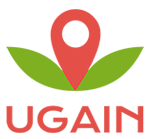
 English
English  Deutsch
Deutsch  Español
Español  Svenska
Svenska 